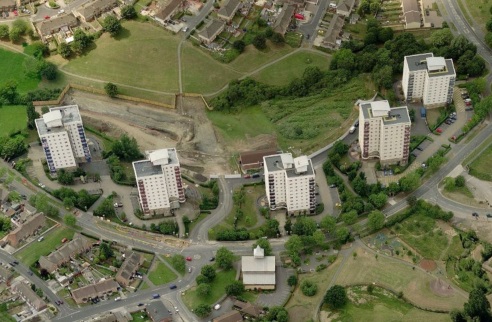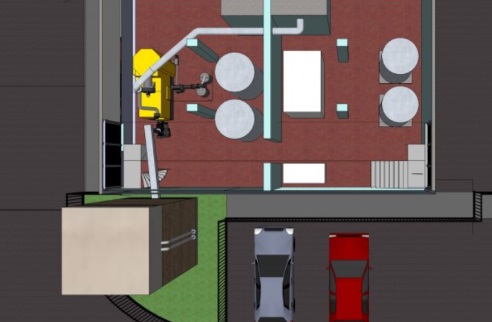Bristol City Council (BCC) owns and operates a number of social housing schemes which provide over 2,100 residential units across the city. The Rowan housing estate comprises 380 residential units within five tower blocks, these are connected by a district heating scheme served from a centralised energy centre in the basement of one of the tower blocks. Heat to the network was previously supplied by gas boilers and gas CHP.
Scope:
BCC is committed to long term carbon reduction and sustainability over all of its activities and properties; Bristol was voted ‘Green Capital 2015’. BCC wished to identify the opportunities for reducing carbon emissions and reduce heating costs to residents of the Rowan housing estate. As Technical Advisor to BCC for low carbon and district heating projects, Sustainable Energy undertook a detailed feasibility for the integration of renewable heating into the existing heat network and provided technical support for full implementation.
Services:
- Detailed technical and financial feasibility assessment
- Detailed design including development of hydraulic schematics and technical specifications
- Development of Invitation to Tender documentation
- Client’s Engineer role throughout construction phase
- Management of the planning application and development of concept drawings and layouts and Design Access and Planning Statement
- Commissioning support and acceptance testing of the completed installation
- Management of the RHI application process; the plant was accredited for RHI in 2015
Solution:
The heating solution comprises a 360kW wood pellet boiler and 10,000 litre thermal store installed within the existing energy centre; two new 1MW gas boilers provide auxiliary and back up heat to the network. The works included upgrading of network distribution pumps and design and implementation of system controls in each of the housing blocks to allow the refurbished network to achieve maximum efficiency in line with the Code Of Practice for Heat Networks. Much of the network distribution equipment in the energy centre was also upgraded to allow network temperatures to be reduced and flow rates to vary depending on heat demand; this minimises energy use for heat distribution and reduces heat losses in the network.



